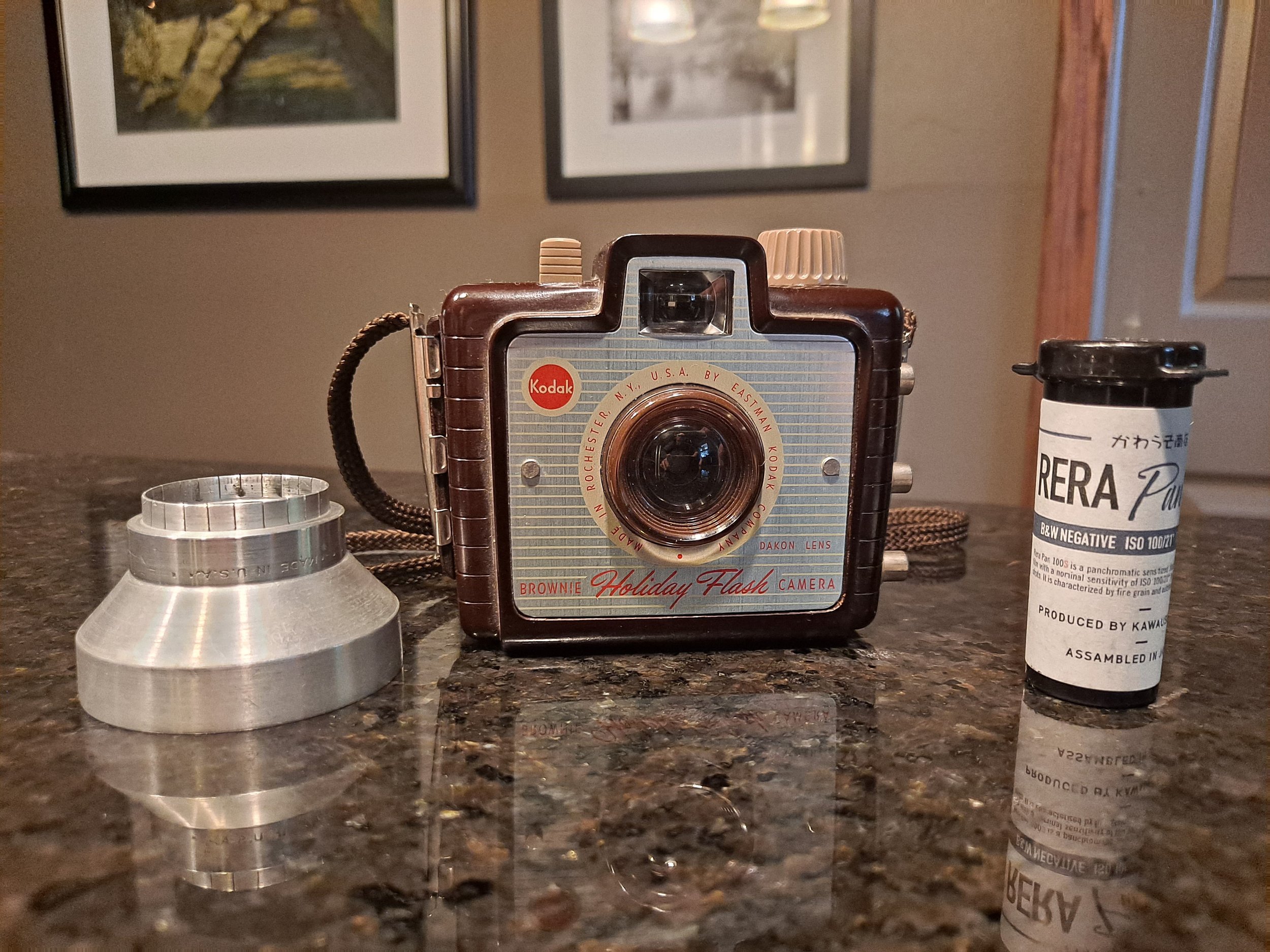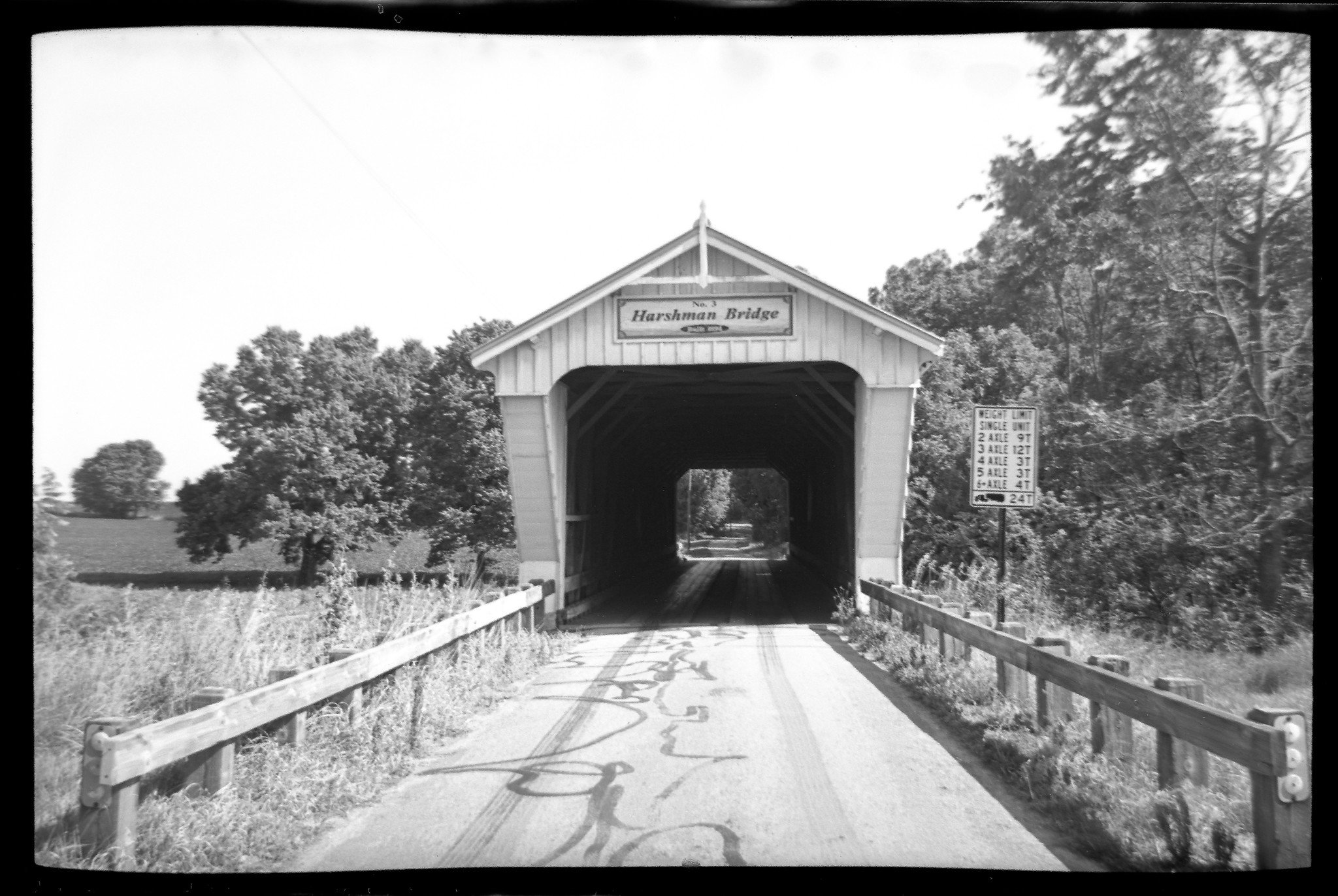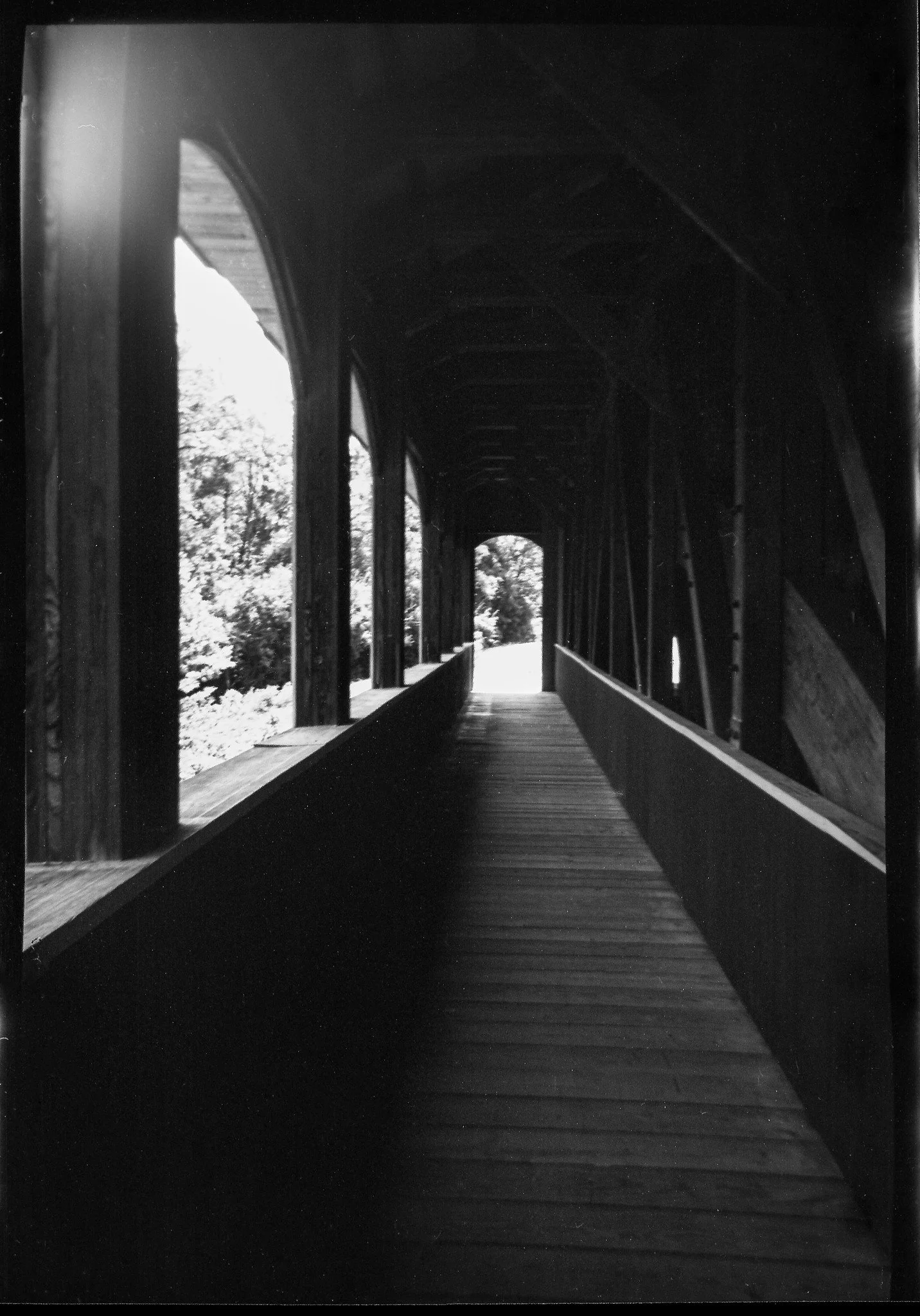Another 1950's Bakelite Wonder – the Kodak Brownie “Holiday” Flash
In an earlier post I wrote about 2 great bakelite medium format cameras – the Kodak Brownie Flash and the Argus Seventy-Five. While these 2 cameras are some of the best known cheap 620 film cameras, there are a host of other cheap “plastic fantastics” in different film formats.
Brownie Holiday owners manual
The Kodak Brownie “Holiday” Flash was a camera that was very popular in its day. It’s brown bakelite combined with silver with red accents just screamed 1950’s. It was made from 1953 thru 1964 and took 127 roll film. If you are unfamiliar with 127 roll film, its still “medium format” film as it is larger than 35mm. The roll width is approximately 46mm wide, which puts it right in-between 120 and 35mm.
127 film was fairly popular in its day, being used by both “point and shoot” cameras as well as the “Baby” Rolleiflex and the Yashica 44. In square format it yields 12 exposures per roll. In 4x6 format it yields 8 images per roll. 127 can still be found today from various retailers, including B&H and Freestyle.
I’ve really had no intention of buying a bakelite 127 camera, but last week I was an antique store and happened upon one in great condition for $10. Knowing I already had several 127 rolls at home in color and B&W I decided “Why not?”.
Before I went out to shoot with it the next day during an outing with Renee, I gave it a light cleaning, dug out some 127 film from the refrigerator, and looked up the specs:
Lens Focal Length: Approximately 75cm
Lens Aperture (fixed): Approximately f/16
Lens Type: Single element plastic “Dakon”
Focal Distance: Somewhere around 10ft to Infinity
Shutter Speed: Somewhere between 1/30th and 1/40th of a second
Film Advance: Knob wind combined with red window in the back
Frame Size: 1-5/8” x 2-1/2” (almost the same size as my Mamiya 645)
Shots Per Roll: 8
Price When New: $5 (with inflation that’s about $57 today)
So as you can see, not a whole lot of options or features. Knowing we were heading out on a fairly sunny day and utilizing the “Sunny 16” rule, I decided I’d throw a roll of 100 ISO Rera Pan B&W film in it. One interesting note about this camera is that the film plane is slightly curved. I think that’s to aid in adding sharpness and fighting some lens distortion. It was an unexpected find when I opened the camera, and one that impressed me. It gave me hope that just maybe the images wouldn’t be too bad. I also found that the lens hood I use on my Argus Seventy-Five also fits the Brownie Holiday, so that was a bonus.
Ready to go - Brownie Holiday camera, a hood to help prevent flaring from bright sun, and a roll of Rerapan 100.
We set off to hit a few covered bridges that Renee hasn’t seen in Montgomery and Preble counties, and I shot all 8 images at 4 different bridges. After we got home that afternoon I developed the roll in Rodinal 1:100 with the Semi-Stand Development method for 60 minutes, with standard stop and fix.
Below are scans of the 8 images, with just some dust removal and levels adjustments. These wouldn’t necessarily be my “final edits” but I wanted to show what images look like out of camera.
What are my thoughts on the camera and images?
Shooting with it is fairly easy. Compose thru the small viewfinder, be as steady as you can, and push the button. It can’t get much easier than that! What you see in the viewfinder also fairly closely matches what you get as your final image.
The images tend to be “sharper” in the middle than the edges, which isn’t much of a surprise from a plastic meniscus lens. “Sharper” is a relative term and isn’t really sharp by today’s standards, but for a fun camera designed for kids and holiday occasions its just fine. I do think the curved film plane helps a little compared to other cameras of the same type as the edges don’t just fall off quickly to a blur, but the trade-off for that is that the image at the borders isn’t exactly square. There’s kind-of a bow on the long sides of the images.
Even in bright sun, the 100 speed film feels like it could be a little slow in the shadows. Like maybe a 200 speed would have done better. That could be the Rerapan though, as it doesn’t have a lot of lattitude. Either way, on a cloudy day you’d be toast if you weren’t shooting 400 speed film or higher, just based on what I am seeing in these images. Given the fact that a lot of 25 speed and 50 speed film was probably shot in these back in the day, one wonders how many images actually came out OK when eager families got their developed images back from the lab.
I’ve got some 400 Rerapan and also some Kodak Gold 200 rolls in 127, so I may take it out for a spin soon with one or both of those loaded.
The other notable issue is that the roll wasn’t wound very tight when it was finished, despite my best attempts to keep good tension on it when I was loading it. It didn’t suffer from very bad light leaks, but I unloaded it in the dark and put it straight into the developing tank. If you unload on a bright day just take caution to do so in the shade and throw the roll into some sort of dark bag or the canister it came in - most 127 comes in a box or a canister.
Is it worth the $10-$20 you normally see these cameras listed for on eBay and in antique stores? Maybe. I’d recommend something like this over buying a Holga or a Diana, which can cost 2 to 3 times more. Granted, they use a more common 120 film size, but if you just want to dip your toe into the historical AND cheap medium format pool, this could be a good start.
It is fun to mess around with and is super small and lightweight. The images aren’t stellar, but looking back on old images from the 50’s and 60’s taken with these type of cameras, the important thing was the memories and moments that they captured.
Do you have an old bakelite camera from the 50’s and 60’s sitting on your shelf? Have you shot with it lately? If so, let me know how it went!
As always, thanks for reading.
Jeremy









